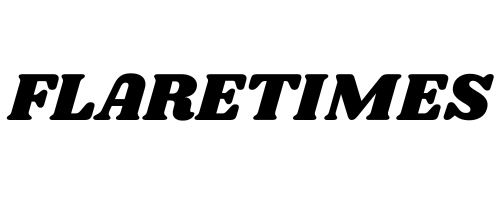Assessment Strategies Assessment Strategies: A Comprehensive Guide to Effective Evaluation in Education
Assessment Strategies are fundamental tools in education, offering pathways to understand where learners stand, what they’ve mastered, and what steps they should take next. When educators implement powerful Assessment Strategies, they not only measure learning outcomes but also shape and guide instruction to better meet students’ needs. In this article, we will explore a broad spectrum of Assessment Strategies: their definitions, types, best practices, challenges, and real-world applications. By weaving the keyword Assessment Strategies throughout this guide, we ensure you fully appreciate the importance and versatility of these methods.
What Are Assessment Strategies?
Assessment Strategies refer to the variety of techniques, tools, and methods teachers use to evaluate student learning, provide feedback, and inform instructional decisions. These strategies go beyond mere testing; they encompass continuous, multi‑dimensional approaches that help educators monitor progress and foster growth. Effective Assessment Strategies are aligned with learning objectives, inclusive, timely, and actionable.
Why Assessment Strategies Matter
Educators rely on Assessment Strategies for multiple critical purposes. First, they offer insight into student understanding and misconceptions. Second, they help tailor instruction to meet individual needs. Third, Assessment Strategies provide accountability, demonstrating to stakeholders (students, parents, administrators) that learning goals are being pursued and achieved. Fourth, when well designed, Assessment Strategies support student reflection, self‑regulation, and ownership of learning. Because of these roles, assessment is not an afterthought but an integral part of teaching and learning.
Types of Assessment Strategies
In this section, we explore common Assessment Strategies, distinguishing among formative, summative, diagnostic, and authentic approaches, and discuss when and how to apply each.
Formative Assessment Strategies
Formative Assessment Strategies are ongoing, checkpoints during instruction meant to gauge understanding in real time. They allow teachers to adjust teaching before final evaluation. Examples include exit tickets, think‑pair‑share, short quizzes, and class discussions. Effective formative Assessment Strategies are low stakes, frequent, and responsive: the feedback should lead to changes in instruction or student approach. Using these Assessment Strategies regularly prevents surprises at end-of-unit exams and supports continuous progress.
Summative Assessment Strategies
Summative Assessment Strategies evaluate student learning at the end of a unit or course. Final exams, projects, presentations, and standardized tests can serve as summative tools. These Assessment Strategies generally carry more weight and are used for grading or certification. The challenge is to ensure summative assessments reflect the full breadth of learning and are aligned with the intended outcomes.
Diagnostic Assessment Strategies
Before beginning instruction, Diagnostic Assessment Strategies help diagnose students’ prior knowledge, misconceptions, or readiness. Pre‑tests, KWL charts (Know–Want to know–Learned), concept maps, and surveys can be part of this toolbox. By employing diagnostic Assessment Strategies, teachers can tailor content, allocate more support, and anticipate difficulties before they derail learning.
Authentic Assessment Strategies
Authentic Assessment Strategies engage students in real‑world tasks or problems, mirroring what professionals do. Portfolios, performance tasks, simulations, service‑learning projects, and case studies qualify as authentic. Because these Assessment Strategies demand application, analysis, and synthesis, they foster deeper learning and transfer beyond the classroom.
Peer and Self‑Assessment Strategies
Peer and Self‑Assessment Strategies invite students to evaluate their own or each other’s work using rubrics or checkpoints. These Assessment Strategies promote metacognition, student autonomy, and reflection. When students apply the same criteria as their teacher, they better internalize expectations and improve future performance.
Technology‑Enhanced Assessment Strategies
In a digital age, Technology‑Enhanced Assessment Strategies leverage software, online quizzes, learning analytics, and interactive platforms. These Assessment Strategies often provide instant feedback, data dashboards, and adaptive questioning. Tools like LMS quizzes, Google Forms, Kahoot, or other platforms support scalable and dynamic assessment experiences.
Best Practices for Implementing Assessment Strategies
Knowing about Assessment Strategies is one thing; designing them effectively is another. Below are key principles to bear in mind when creating and applying Assessment Strategies in your instruction.
- Alignment with Learning Objectives
Every assessment must align with the intended learning goals. If your objective is higher‑order thinking, your assessment can’t just ask for recall. Design Assessment Strategies that match what you teach. - Clarity and Transparency
Students should clearly understand assessment criteria, expectations, and the purpose behind the assessment. Use rubrics, exemplars, and criterion sheets as part of your Assessment Strategies so students know what success looks like. - Variety and Balance
Relying on a single mode of assessment (e.g., multiple‑choice tests) limits your insights. A balanced mix of Assessment Strategies—formative, summative, authentic—ensures you capture different dimensions of learning. - Timely Feedback
An Assessment Strategy without meaningful feedback is lost opportunity. Feedback must be prompt, specific, and actionable. Students should know what they did well and how to improve. - Continuous Improvement
Assessment Strategies themselves should be reviewed and refined based on data, student responses, and outcomes. Reflection on assessment design leads to better future cycles. - Inclusivity and Equity
Design Assessment Strategies mindful of diverse learners—differentiated support, accommodations, multiple modalities—so no student is unfairly disadvantaged. - Student Involvement
When students help co‑design rubrics or self‑assess, Assessment Strategies become more student‑centered and motivational. Their buy‑in increases engagement and meaning. - Data Use and Decision Making
Data from Assessment Strategies should feed back into instructional planning. Use trends, item analysis, error patterns to adjust pacing, reteach, or enrich as needed.
Challenges and Solutions in Applying Assessment Strategies
Even with best intentions, educators often face obstacles in implementing robust Assessment Strategies. Let’s explore common challenges and potential solutions.
Time Constraints
Teachers often cite lack of time for crafting, administering, and grading assessments as a barrier. To address this, leverage formative Assessment Strategies that are quick (exit tickets, mini quizzes), use technology tools for automatic grading, or rotate peer assessment to share workload.
Student Resistance
Some students may view frequent assessments negatively. To counter that, explain the purpose and benefit of Assessment Strategies in supporting their growth, and incorporate some choice or voice in assessment format to increase buy‑in.
Bias and Subjectivity
Especially in open or performance tasks, subjective judgment may creep in. Use clear rubrics, calibrate scoring with colleagues, anonymize work where possible, and include multiple assessors to make Assessment Strategies more objective.
Misalignment With Instruction
If assessments measure content not taught, or at inappropriate cognitive levels, results are misleading. Always revisit alignment when designing Assessment Strategies and validate that they map back to learning goals.
Overemphasis on Summative Assessment
Relying too heavily on end-of-unit tests leads to teaching-to-the-test. Prioritize formative and authentic Assessment Strategies so that learning is richer and more integrated, not just exam preparation.
Steps to Design Effective Assessment Strategies
Here’s a suggested cycle for educators developing or refining their Assessment Strategies over time:
Step 1: Define Clear Learning Objectives
Start with precise, measurable objectives. What should students know, do, or understand?
Step 2: Choose Appropriate Assessment Types
Select which Assessment Strategies (formative, summative, authentic, self, peer) align best with objectives and context.
Step 3: Develop Rubrics or Criteria
Create scoring guides or rubrics that articulate expectations. These rubrics are central to transparent Assessment Strategies.
Step 4: Implement Assessment
Carry out the assessment in the classroom—quizzes, projects, discussions, etc.—using your chosen Assessment Strategies.
Step 5: Provide Feedback and Reflect
Deliver feedback promptly. Invite student reflection, allow revision, and examine results to see what worked and what didn’t.
Step 6: Analyze Results and Adjust Instruction
Use data from Assessment Strategies to inform reteaching, extension, grouping, or intervention.
Step 7: Revise Assessment Design
Based on results and reflections, tweak your Assessment Strategies for future use—improving alignment, fairness, clarity, and effectiveness.
Real‑World Examples of Assessment Strategies in Practice
To bring theory to life, here are some illustrative examples of Assessment Strategies in different educational contexts.
Elementary Classroom – Literacy Assessment Strategies
A teacher uses formative Assessment Strategies by giving students a short “exit slip” at the end of each reading lesson asking two questions about the day’s story. Midway through the unit, a diagnostic Assessment Strategy (a pretest) reveals which phonics blends students haven’t mastered. At the end, a summative Assessment Strategy is a project where children create an illustrated narrative and read it aloud (an authentic assessment). Peer and self‑assessment strategies are incorporated—students evaluate each other’s drafts using a rubric and revise accordingly.
High School Science – Laboratory Assessment Strategies
In a chemistry class, the teacher employs formative Assessment Strategies by pausing experiments to ask students to predict results and reflect on discrepancies. A diagnostic Assessment Strategy at the start gauges prior knowledge of acid–base concepts. For summative assessment, students complete a laboratory report evaluated by a rubric. An authentic Assessment Strategy is built in—students design their own small investigation, collect data, and present findings. Peer review and self‑assessment strategies help students critique lab reports and refine their methodology.
University Level – Blended Course Assessment Strategies
In a blended (online + in‑person) course, the instructor uses technology‑enhanced Assessment Strategies like online quizzes that adapt to student performance. Weekly formative Assessment Strategies include discussion prompts and low‑stakes polling. The midterm exam serves as a summative Assessment Strategy. An authentic Assessment Strategy is a research project whereby students propose, conduct, and present data. Peer and self‑assessment strategies are built into the project phase: students review each other’s proposals and reflect on feedback.
Tips to Ensure the Keyword “Assessment Strategies” Appears Naturally (10–15 Times)
To maintain readability while including Assessment Strategies frequently (aiming for 10–15 occurrences), consider the following tactics. First, vary sentence structure: “When educators adopt Assessment Strategies …,” “Among various Assessment Strategies …,” “The success of Assessment Strategies hinges on ….” Second, use plural and possessive forms (“Assessment Strategies’ effectiveness”) or pair with adjectives (“innovative Assessment Strategies,” “inclusive Assessment Strategies”). Third, intersperse the term in headings and transitional phrases. Last, avoid crowding—space the references across the article in different sections, as in this text you are reading now.
Reflection on the Future: Trends in Assessment Strategies
As education evolves, so too will Assessment Strategies. Below are some emerging trends to watch.
Adaptive and AI‑Driven Assessment Strategies
With machine learning and AI, future Assessment Strategies may personalize questions in real time, adjusting difficulty based on student responses and predicting learning paths.
Gamified Assessment Strategies
Integrating game elements—badges, levels, challenges—may transform Assessment Strategies into engaging, low-stakes experiences that motivate learners.
Learning Analytics and Dashboard‑Based Assessment Strategies
Data visualization and dashboards will allow both teachers and students to monitor progress over time, enabling more responsive interventions.
Project‑Based and Portfolio‑Driven Assessment Strategies
A shift toward continuous, portfolio‑based assessment may reduce reliance on high-stakes testing and promote long-term growth, making Assessment Strategies more holistic.
Culturally Responsive and Equity‑Centered Assessment Strategies
Assessment Strategies will increasingly emphasize cultural relevance, multiple modalities, and inclusive practices to honor diverse learners and reduce bias.
Conclusion
Assessment Strategies are not a one-size-fits-all tool; rather, they represent a rich spectrum of approaches educators can adopt to monitor, support, and enhance student learning. Whether formative, summative, authentic, or technology-driven, the power of Assessment Strategies lies in alignment, clarity, feedback, and continuous improvement. By weaving Assessment Strategies consciously and purposefully across planning, instruction, and evaluation, educators empower students to reach their full potential. As the field advances, the most effective Assessment Strategies will be those grounded in equity, personalization, and insightful data—helping transform education for a changing world.
Frequently Asked Questions (FAQs)
Q1: What is the difference between formative and summative Assessment Strategies?
Formative Assessment Strategies are ongoing checks during instruction designed to diagnose learning, provide feedback, and guide teaching, while summative Assessment Strategies are final evaluations at the end of a unit or course, used to measure overall achievement.
Q2: How often should I implement Assessment Strategies in a class?
You should use formative Assessment Strategies frequently (daily or weekly, depending on course length), intersperse diagnostic ones at the start of units, and reserve summative assessments at logical endpoints. Strive for a balanced cadence of Assessment Strategies tailored to your context.
Q3: Can students design their own Assessment Strategies?
Yes. Allowing students to help co‑design rubrics, choose assessment formats, or reflect via self‑assessment strategies fosters ownership. When learners participate in designing Assessment Strategies, they tend to take feedback more seriously and engage more deeply.
Q4: How do I ensure fairness and reduce bias in Assessment Strategies?
Use clear, transparent rubrics; anonymize work when possible; use multiple evaluators; calibrate scores through moderation; offer multiple modalities in your Assessment Strategies (written, oral, visual) to accommodate diverse learners.
Q5: How do I use results from Assessment Strategies to improve instruction?
Analyze patterns, mistakes, and gaps in student responses (e.g. via item analysis), then use that data to reteach, scaffold, group students strategically, enrich high performers, or adjust your pacing. The results from Assessment Strategies should directly influence your teaching plan and future assessments.







